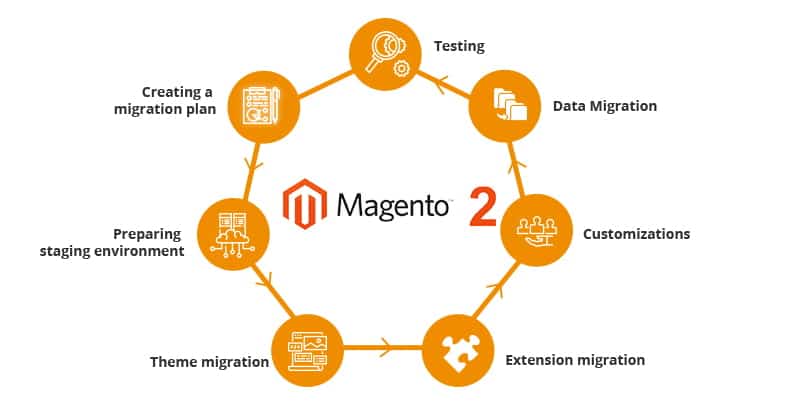Magento migration – The complete guide

Magento has pressed the button on Magento 1 and will stop supporting Magento 1 by June 2020 for both enterprise and community edition.
It is a high time to migrate your store to Magento 2, although we understand that migration can be a nightmare for many retailers, our certified Magento 2 developers are here to make this transition easy for you.
Why do you need to migrate to Magento 2?
Magento is currently powering 28% of sites on the internet, but still, Magento 1 has always been criticized by Magento development experts and critics due to the performance issues.
Magento 2 offers a massive upgrade over Magento 1 when it comes to performance. So it becomes essential for you to migrate to Magento 2.
What should be kept in mind before Magento migration?
Before you migrate your store to Magento 2, here are some aspects that need to be taken care of –
- Perform a full backup of your Magento 1 store
- Create a clone of your Magento 1 store. Never perform the migration on the live Magento store.
- Analyze in the clone website as what needs to be kept and what are things that can be removed from the new Magento 2 store.
- Perform a compatibility check on the existing theme, extensions to make sure that they are compatible with Magento 2.
Magento migration process

According to the official documentation by Magento, the migration process can be achieved in four different stages –
- Theme Migration
- Extension Migration
- Customizations
- Data Migrations
- Testing, Testing, Testing
Theme migration
Magento 2 has introduced a lot of new technologies and methodologies to deliver an enhanced shopping experience to both merchants and the users. But the major problem is that you cannot directly migrate your theme from Magento 1 to Magento 2.
For Magento 2, the new theme needs to be created from scratch, keep in mind the user experience and responsive design.
You can also select some pre-built Magento 2 themes from the Magento 2 marketplace.
Magento extension migration
The major problem here is that the Magento 1 extension will not work on Magento 2 and even if you try to integrate Magento 1 extensions on Magento 2, you may experience compatibility issues with your new Magento 2 store.
The Magento community and developers are trying hard to make the process of porting Magento 1 extensions to Magento 2 an easy process but until then only install the relevant Magento 2 extensions from the Magento marketplace.
Customization
In most of the case, the custom code used in Magento 1 is compatible with Magento 2, but it also needs to be taken into consideration that there are structural differences in both the platforms so there may be some additional work required.
Magento also offers a Code Migration Toolkit that makes the process of migrating custom code an easy process.
Data Migration
The last step in the Magento migration process is to migrate your settings and data, which includes products, orders, store configurations, categories, settings, etc. to Magento 2.
Magento has provided the most feasible solution for Magento Migration in the form of Magento 2 Data Migration Tool.
This official tool by Magento easily migrates your store data and settings to Magento 2 using CLI commands. Data Migration Tools completely migrate the store data and settings from the Magento 1 database to Magento 2 database based on a set of rules defined within the XML file.
Here is the complete step by step guide for Data Migration –
Step 1 – Install the Data Migration Tool
The best possible way to install the Data Migration tool is by using the composer. Make sure that the version of Magento 2 matches the version of the Data Migration tool.


Comments